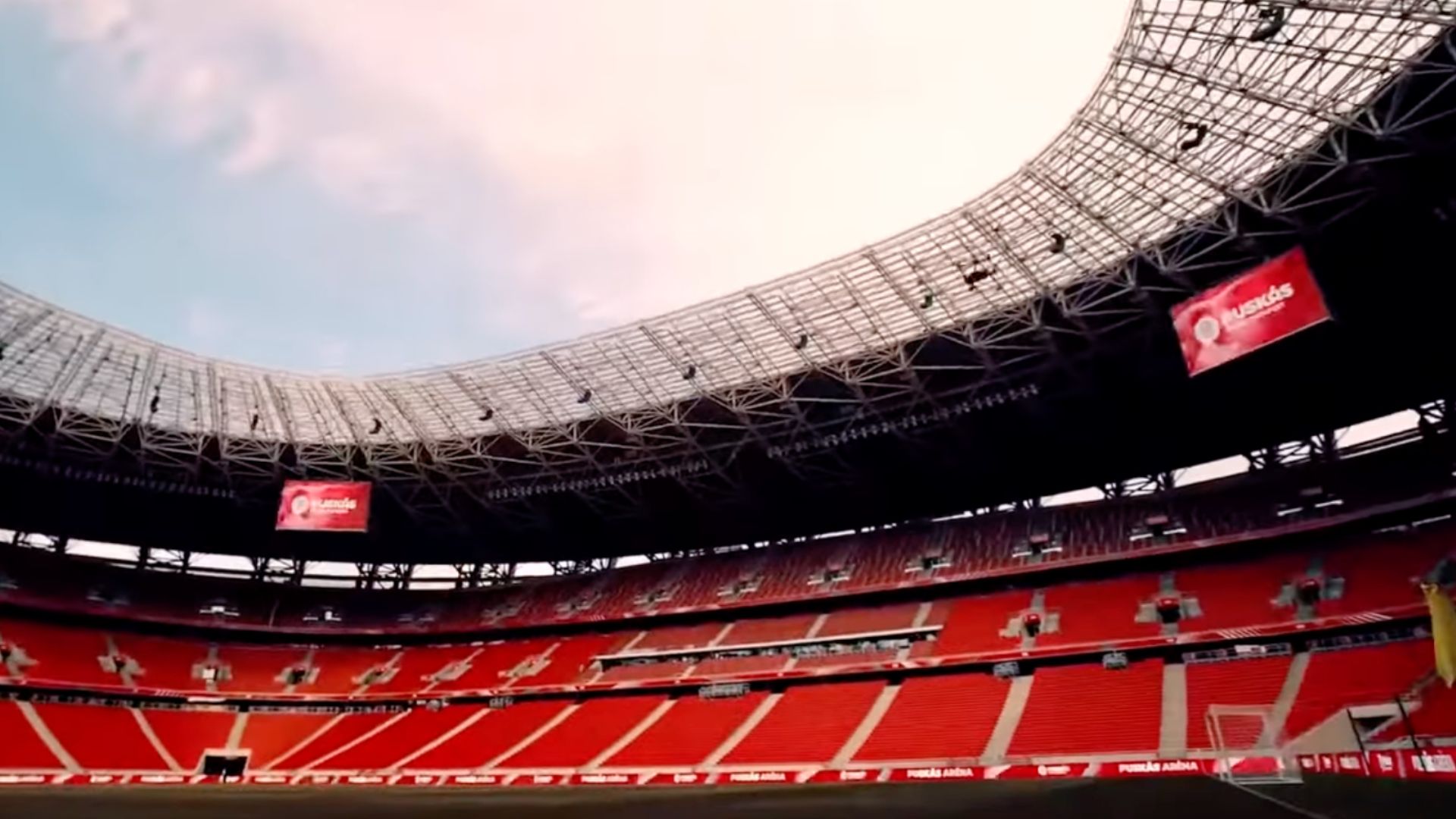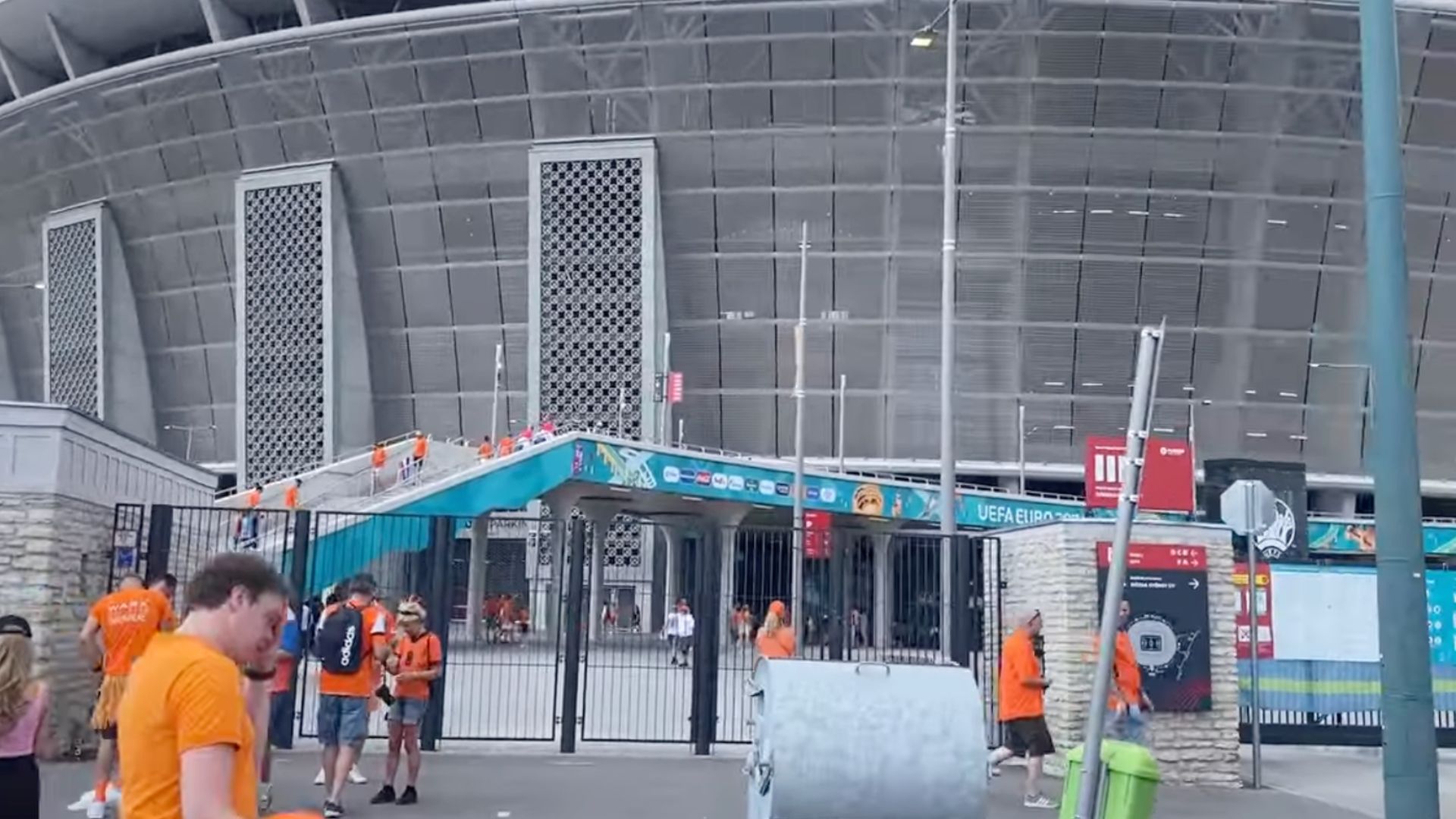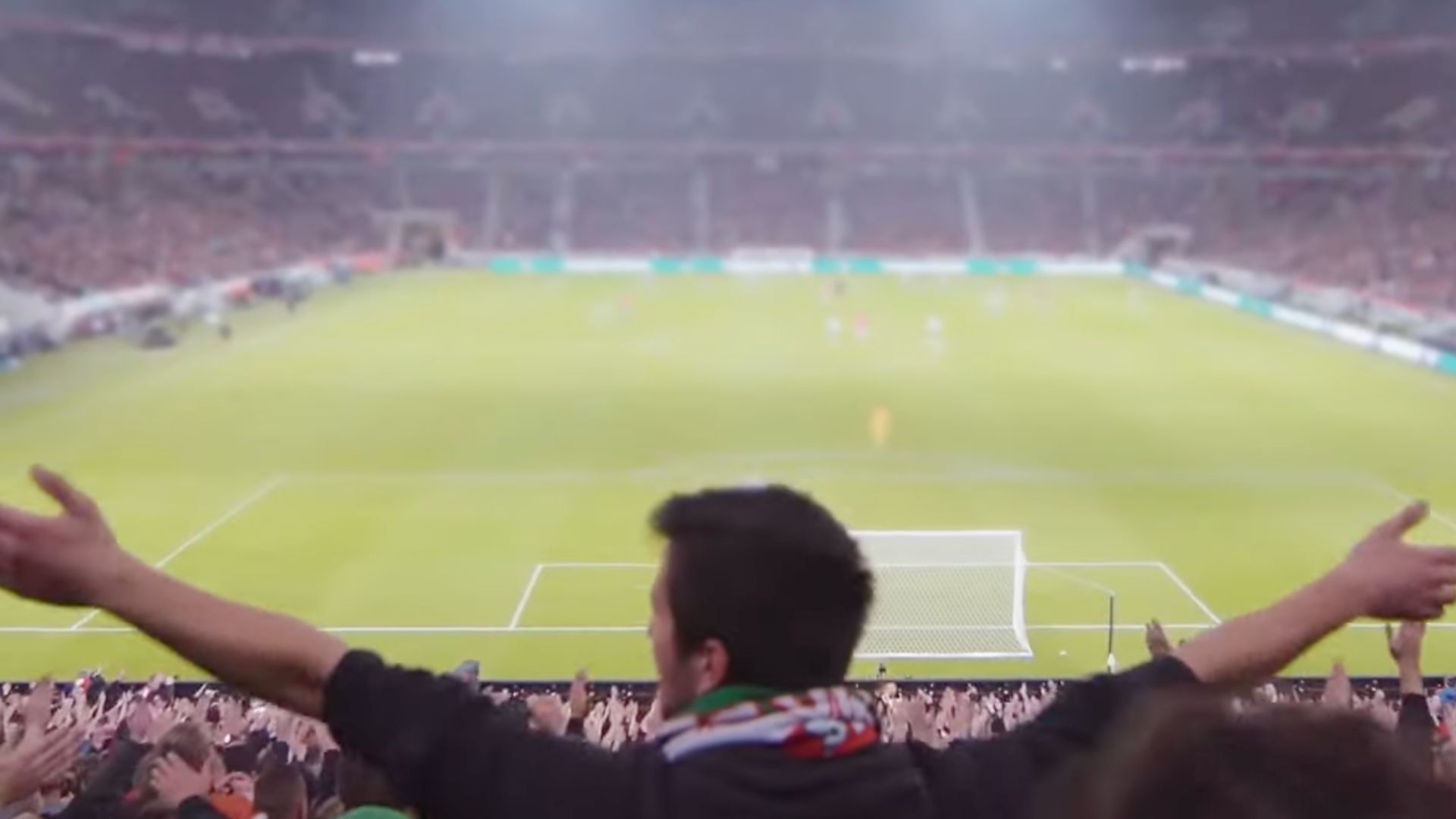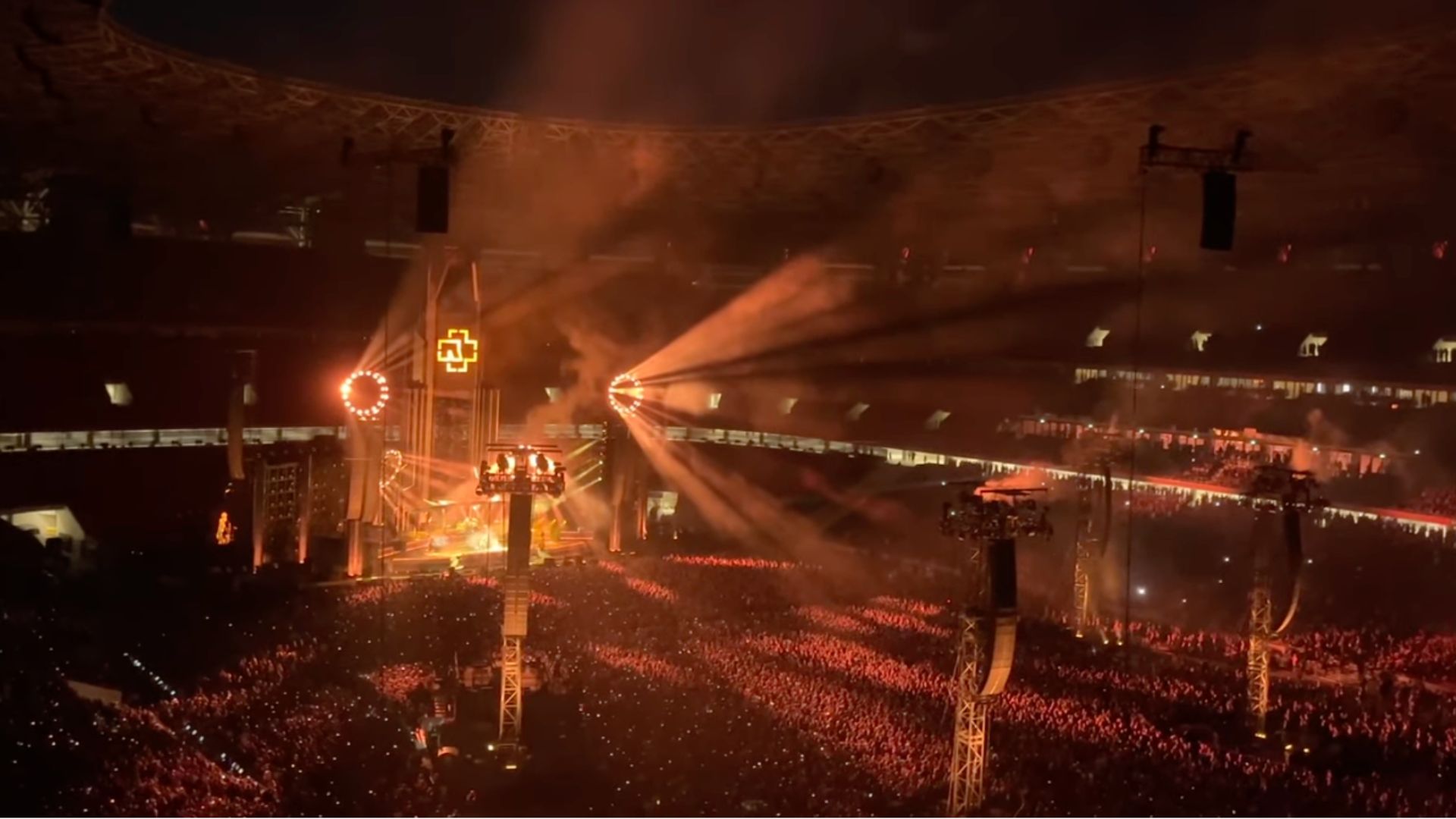Ferenc Puskás Stadium is not just a sports venue; it’s a monumental tribute to Hungary’s legendary football legacy, making it a must-visit for any traveler in Budapest.

Highlights
- Stand in awe of the grand facade and intricate design that mark Ferenc Puskás Stadium as an architectural marvel.
- Explore the stadium’s museum to delve into the rich history of Hungarian football and the legendary Puskás himself.
- Attend a live match to experience the electrifying atmosphere that transforms this iconic venue into a sea of passionate fans.
What to see and do
With a variety of activities ranging from guided tours to watching thrilling matches, there are countless things to do at Ferenc Puskás Stadium that will captivate sports enthusiasts and history buffs alike.
Tour the Stadium

When you visit Budapest, a trip to the Ferenc Puskás Stadium is a must. Named after Hungary’s legendary footballer, Ferenc Puskás, this modern marvel stands as a testament to both contemporary architecture and deep-rooted football history.
As you approach the stadium, you’ll immediately be captivated by its grand facade. With a capacity of around 67,000 seats, Puskás Arena is not just a stadium—it’s a colossal monument dedicated to sports and entertainment.
The architectural design is sleek and modern, featuring a combination of steel and glass that gives it a futuristic vibe. But what really makes it stand out is its blend of functionality and aesthetics. Inside, you’ll find state-of-the-art facilities that cater to both athletes and spectators, ensuring a top-notch experience for everyone.
Insider Tip: Don’t miss the guided tours that offer an in-depth look at the stadium’s design and history. These tours often include anecdotes and lesser-known facts about Ferenc Puskás himself, making them a fantastic way to dive deeper into the local football culture.
For a touch of luxury, consider booking a VIP tour. These exclusive tours give you access to the stadium’s premium sections, including luxury suites and premium seating areas. Imagine watching a match from a plush seat, sipping on a fine Hungarian wine—it’s an experience that elevates any game or event to a whole new level.
Fun Fact: The VIP sections are often frequented by celebrities and high-profile guests. Who knows, you might even bump into a famous face!
Attend a Football Match or Event

If you’re a football fan, attending a match at Puskás Arena is an experience you won’t forget. The atmosphere is electric, especially when Hungary’s national team takes to the field. The roar of 67,000 fans can send chills down your spine. Trust me, the energy is palpable!
Pro Tip: Buy your tickets in advance for major games or events. They sell out fast, and you wouldn’t want to miss out on the action.
Arrive early to explore the various fan zones around the stadium. These areas are buzzing with activity—food stalls offering local delicacies, merchandise shops selling everything from jerseys to memorabilia, and interactive zones where fans can engage in fun activities.
Best Bite: Look for stalls selling lángos, a delicious Hungarian deep-fried dough topped with sour cream and cheese. It’s a local favorite and the perfect snack to enjoy before the game.
Memorabilia Tip: The merchandise shops are great for picking up souvenirs. Whether it’s a Puskás jersey or a scarf, you’ll find plenty of options to take a piece of the experience home with you.
Visit the Ferenc Puskás Statue
Just outside the stadium, you’ll find the iconic statue of Ferenc Puskás. Known as one of the greatest footballers of all time, Puskás is a national hero. The statue is a popular photo spot, and for good reason. It’s not just a tribute to a football legend but a symbol of Hungarian pride.
Photography Tip: Visit early in the morning or late in the afternoon for the best lighting and to avoid crowds. The golden hour light gives the statue a magical glow that’s perfect for photos.
Explore the Puskás Arena Museum
Inside the stadium, the Puskás Arena Museum offers a fascinating look into the history of Hungarian football. Key exhibits showcase memorabilia related to Ferenc Puskás, including his jerseys, trophies, and personal artifacts.
The museum isn’t just about static displays. Interactive sections and multimedia presentations make the experience engaging and educational. Spend some extra time at these interactive zones to fully appreciate the history and achievements of Hungarian football.
Insider’s Note: The museum also features rare footage of Puskás in action. It’s like stepping back in time and witnessing the magic of his playing days firsthand.
Attend Concerts and Special Events

Puskás Arena isn’t just for football; it’s a versatile venue that hosts a variety of concerts and special events throughout the year. From international music stars to local cultural showcases, there’s always something exciting happening.
Securing tickets for these events is crucial, so keep an eye on the arena’s event calendar. Arrive early to navigate the crowds and find the best entrance for a smooth experience.
Pro Tip: For concerts, the acoustics in the arena are top-notch. But, if you want the best sound experience, aim for seats closer to the center stage.
Whether you’re a football enthusiast, a music lover, or just someone looking to soak in some local culture, Puskás Arena offers something for everyone. So, lace up your shoes, grab your camera, and get ready to explore one of Budapest’s most iconic landmarks!
Check arena events at Live Nation ->
Directions
The quickest way to reach Ferenc Puskás Stadium from Budapest’s city center is by taking the M2 (red line) metro from Deák Ferenc tér or another central station directly to Puskás Ferenc Stadion station, followed by a short 4-minute walk.
The M2 operates from early morning until late at night. Alternatively, several bus lines, including the 195, 75, and 80, stop near the stadium at the Puskás Ferenc Stadion M stop, just a 2-minute walk away. For late-night events, the 908 night bus begins service at 3:00 AM.
If you’re staying nearby, walking or biking is a great option, with pedestrian-friendly paths and bike racks available at the arena.
Nearby Places
City Park (Városliget): A sprawling public park near Puskás Arena, ideal for a relaxing stroll before or after an event. Key attractions include Vajdahunyad Castle, the Széchenyi Thermal Bath, and the Budapest Zoo, along with seasonal activities like ice skating in winter and boating in summer.
Heroes’ Square (Hősök tere): One of Budapest’s major squares, known for its iconic statues of the Seven Chieftains of the Magyars and other important Hungarian leaders. The Millennium Monument, built in 1896, commemorates the 1000th anniversary of the Hungarian state.
Museum of Fine Arts (Szépművészeti Múzeum): Home to an extensive collection of European art, featuring works from ancient times to the present day. Visitors can enjoy special exhibitions and a remarkable collection of classical antiquities.
Budapest Zoo and Botanical Garden: One of the oldest zoos in the world, featuring over 1,000 animal species and beautiful botanical gardens. Offers family-friendly activities and educational programs for visitors of all ages.
Hungarian Agricultural Museum: Housed in Vajdahunyad Castle, this museum offers fascinating exhibits on Hungary’s agricultural history and heritage. Unique collections include historic farming tools and exhibitions on viticulture and animal husbandry.
Széchenyi Thermal Bath: One of the largest and most popular thermal baths in Europe, featuring a variety of indoor and outdoor pools, saunas, and wellness services. A visit in the evening offers the unique experience of soaking in the thermal waters under the stars.
Did you know that: (4 Interesting Facts about Ferenc Puskás Stadium!)
- Named after Hungary’s most celebrated footballer, Ferenc Puskás, the stadium stands as a tribute to his incredible career and legacy. Puskás is considered one of the greatest goal scorers in the history of the sport.
- The stadium originally opened in 1953 as the People’s Stadium (Népstadion) and was only renamed in honor of Puskás in 2002, a year before he passed away.
- Ferenc Puskás Stadium hosted the 2019 UEFA Super Cup, making it one of the few venues outside Western Europe to host this prestigious match.
- With a seating capacity of over 67,000, Ferenc Puskás Stadium is not only the largest stadium in Hungary but also one of the largest in Central Europe.
History
Historical Timeline of Ferenc Puskás Stadium in Budapest:
- 1953. Construction of the original Népstadion (People’s Stadium) begins. The project is led by architect Károly Dávid.
- 1953. The stadium opens its doors to the public. The inaugural match sees Hungary’s national team defeat England 7-1, a historic game that echoes across the football world.
- 1954. Népstadion hosts the European Athletics Championships, marking its place as a premier sporting venue in Europe.
- 1960s-1980s. The stadium witnesses a golden era, hosting numerous international football matches, concerts by global music icons, and various other major events.
- 2002. The stadium is renamed Ferenc Puskás Stadium in honor of Hungary’s legendary footballer, Ferenc Puskás, one of the greatest players in football history.
- 2016. The original structure is demolished to make way for a new, modern stadium that meets international standards.
- 2019. The newly rebuilt Puskás Aréna is inaugurated, boasting a stunning design and state-of-the-art facilities. The first match at the new stadium features Hungary vs. Uruguay.
- 2020. Puskás Aréna hosts several matches of the UEFA Euro 2020, cementing its status as a key venue for top-tier football events.
- Present Day. Ferenc Puskás Stadium, now known as Puskás Aréna, stands as a symbol of Hungary’s rich football heritage and continues to be a central hub for major sporting and cultural events.
FAQ
What is Ferenc Puskás Stadium known for?
Ferenc Puskás Stadium is renowned for being Budapest’s premier sports arena, named after the legendary Hungarian footballer Ferenc Puskás. It hosts major football matches, concerts, and various other significant events, making it a central hub for sports and entertainment in Hungary.
How can I get to Ferenc Puskás Stadium?
You can easily reach Ferenc Puskás Stadium via public transportation. The stadium is conveniently located near the Puskás Ferenc Stadion metro station on the M2 line. Alternatively, several bus and tram lines also stop nearby, ensuring seamless access from various parts of the city.
Can I take a tour of Ferenc Puskás Stadium?
Yes, guided tours are available at Ferenc Puskás Stadium. These tours offer a behind-the-scenes look at the stadium, including the locker rooms, press areas, and the pitch itself. It’s a fantastic way to delve into the history and significance of this iconic venue.
Are there any food options inside Ferenc Puskás Stadium?
Ferenc Puskás Stadium offers a range of food and beverage options during events. From typical stadium snacks like hot dogs and popcorn to local Hungarian treats and beverages, you’ll find plenty of choices to satisfy your cravings while enjoying a match or concert.
What should I know before attending an event at Ferenc Puskás Stadium?
Before attending an event at Ferenc Puskás Stadium, it’s important to check the event-specific guidelines, including prohibited items and security measures. Arriving early can help you avoid long queues and ensure a smooth entry. Also, be aware of the weather, as some parts of the stadium are exposed to the elements.
Map & Address
Ferenc Puskás Stadium is located at 1146 Budapest, Istvánmezei út 3-5, Hungary.
